Some of my work this spring has taken me to southwestern Minnesota and I was so excited to see that one of the places I have always wanted to visit in this beautiful state was close by.
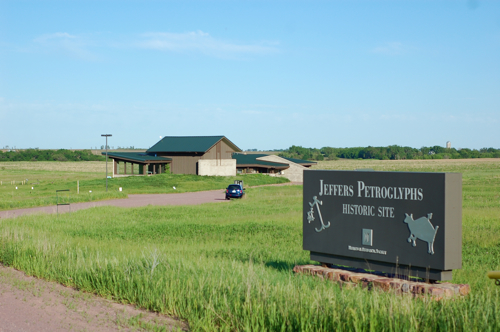
It's called Jeffers Petroglyphs Historic Site and it's in Comfrey, Minnesota. The visitor center itself does not open until after Memorial Day but a person can visit just about any time and walk the well marked trails--and stay on the trails so as not to ruin all the native prairie landscape they have worked so hard to create. I called to confirm they were open before I headed out and the person working the phone recommended evening viewing. Many people come during the middle of the day and it's harder to see the ancient petroglyphs with the sun overhead. She said that the late afternoon sun makes the carvings look almost 3D. That timing worked for me and I knew that would be good photo light. I asked if she was aware of any birds I could find when I visited. Her first suggested bird was:
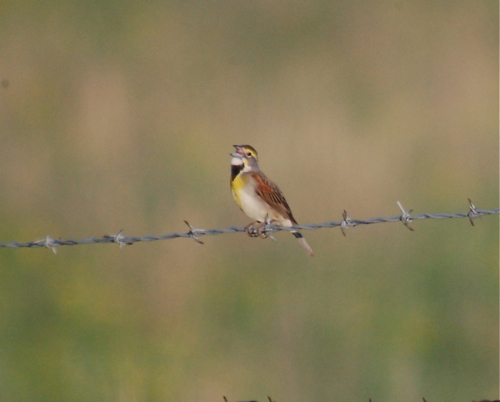
Dickcissel! SWEET--I hadn't seen one of these snazzy looking sparrows for a year or two so I was up for some dickcissel action. When I arrived in the parking lot, both a grasshopper sparrow and the above dickcissel greeted me. I noticed that the visitor center was closed and my vehicle was the only one in the lot. It was a gorgeous late spring night and I thought I couldn't be the only person at the historic site for long, but I ended up spending over three glorious hours alone and some fantastic prairie birds. Many Native Americans consider this spot a holy place and come to pray. I found it peaceful and felt an overwhelming sense of gratitude that some people have worked so hard to preserve it for my generation and future generations to enjoy.
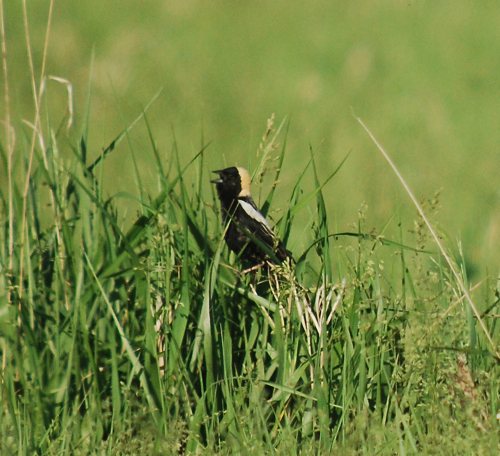
Bobolink (the above male bird) and western meadowlark rounded out the evening chorus. Incidentally, if you are not familiar with the song of the bobolink, listen here. For western meadowlark, listen here. I'm serious, if you have never heard either of those birds, click on those links--can you believe birds like that can be found outdoors? I love the bobolink song so much that it is the default ring tone on my Blackberry (Manilow). The bird song combined with the late spring warm air and sun made for a wonderful place for me to unwind after two (incredibly fun, but) exhausting weeks of travel.
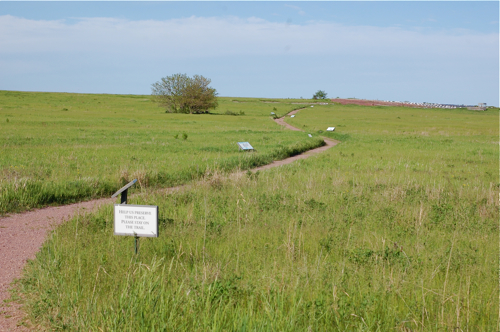
The well marked trails lead out to the petroglyphs. Signs supply some of the information for the long-grass prairie (and to please not pick the flowers) while birds serenade you. I must admit that I wanted to run off the trail the and get better photos of the bobolinks but instead enjoyed the songs from afar.
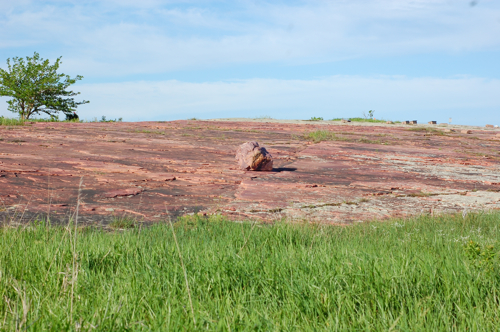
The petroglyphs can be found in the Red Rock Ridge, an outcropping of Sioux quartzite that goes for 23 miles. The petroglyphs were discovered by Europeans in the 1870s and the property was purchased by the Minnesota Historical Society from W. R. Jeffers, Jr. in 1960. The age of the petroglyphs is not known for certain. From what I can find on the internet, they could be anywhere from 3000 - 5000 years old--that's older than the pyramids in Egypt.
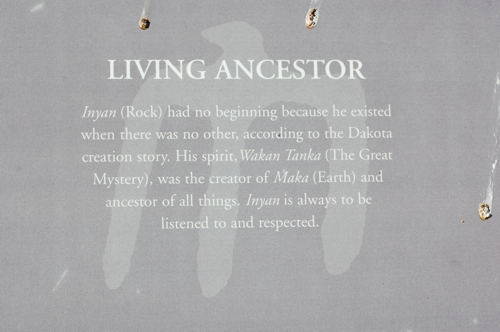
Signs near the outcropping give you a hint of symbols to watch for in the rocks. Above is the sign for Wakan Tanka.
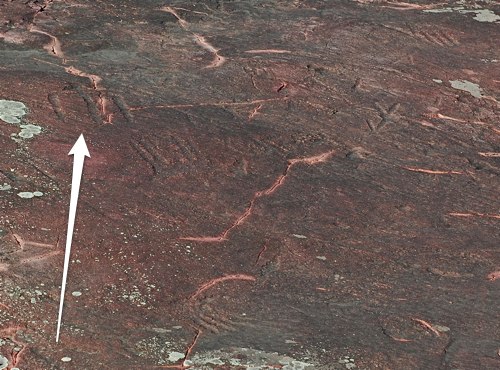
Above is an arrow pointing to the petroglyph of Wankan Tanka. You can see several other ancient carvings in there as well. As I basked in the late afternoon sun and listened to the birds singing (without any man made sounds of cars or airplanes) I fell in love with this historic site: birds and archeology--what a fantastic combo.
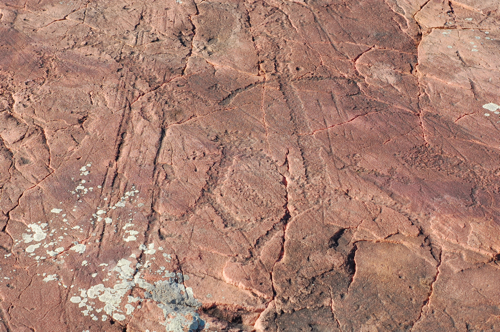
The late afternoon sun angle did make the carvings easier to see but I did not find them all, my attention was divided by all the birds. I took in as much as I could and made a mental note to visit again when my travels bring me back this way in the coming weeks.
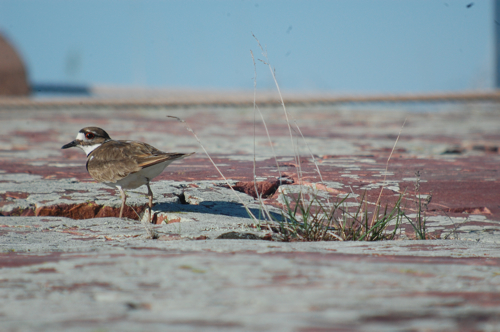
As I continued on along the rock trail, I noticed a killdeer walking slowly and giving a halfhearted attempt to lead me away by pretending to be somewhat injured. The killdeer apparently ignored all the signs to stay off and not touch the petroglyphs and nest on one.
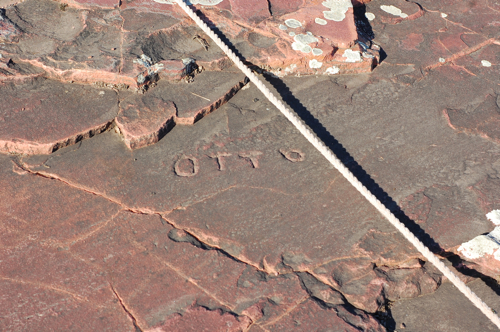
There were some noticeably newer carvings in the rocks. I think it's a safe bet that this is not a 3000 year old artist's signature to the rock carvings. I doubt there were too many Dakota running around with the name Otto.
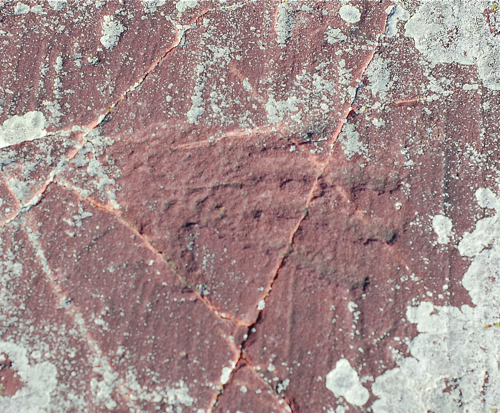
Here's a proper signature. I was struck by how similar in size this carved hand was to mine--such tiny hands!
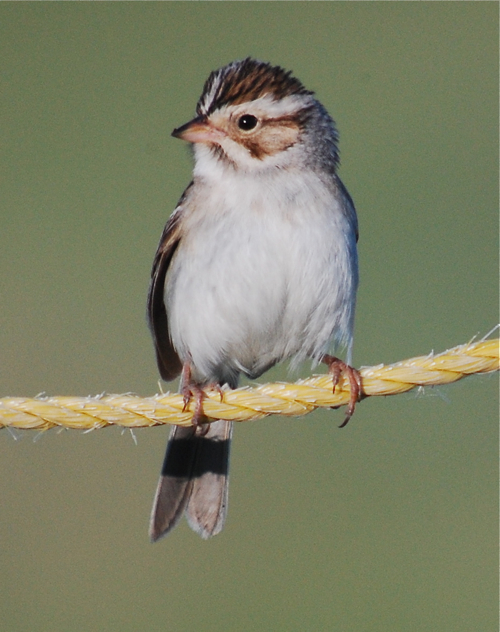
As I walked to my car, I noticed some clay-colored sparrows furiously chipping back and forth. I figured that they must have been setting up territory near the building. Lots of birds were nesting on the closed visitor center: starlings, robins and barn swallows at the very least.
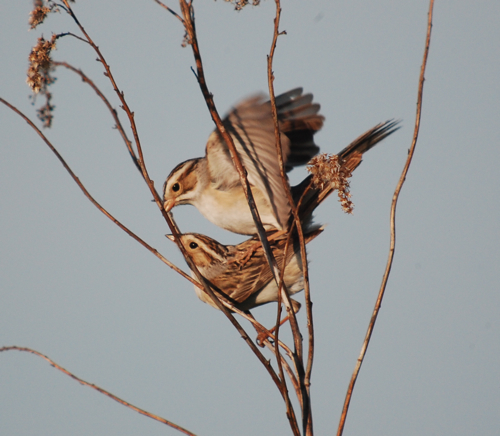
And then to cap off my perfect time at a perfect historic site, I got a shot of the clay-colored sparrows engaged in a cloacal kiss. Ah for one brief moment I could tell male and female apart! I know bird sex is fast, but I'm still amazed that any eggs are produced from balancing on the back of a small brown bird while she is balanced on a branch.
To learn more about Jeffers Petroglyphs State Historic Site visit here and here. They will have some official programming this summer and a guide can give you the inside scoop on the site's history and ancient symbols carved in the stone. If you are a birder and in the mood for some great prairie birds, definitely check this little spot out. The small patch of prairie is surrounded by agriculture so it concentrates some awesome species in one spot.
Seriously, if you have ever had it in the back of your mind to visit this place, make it a must do this summer. I love all the archaeology we have in this state from fossil hunting in St Paul to petroglyphs in Comfrey.
